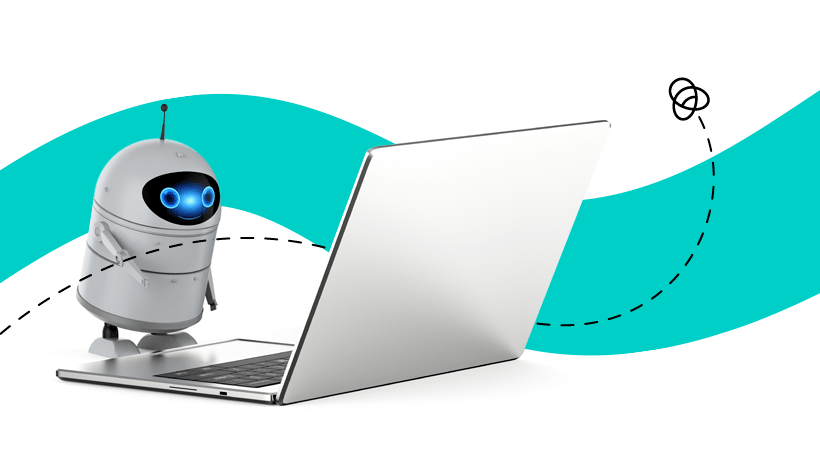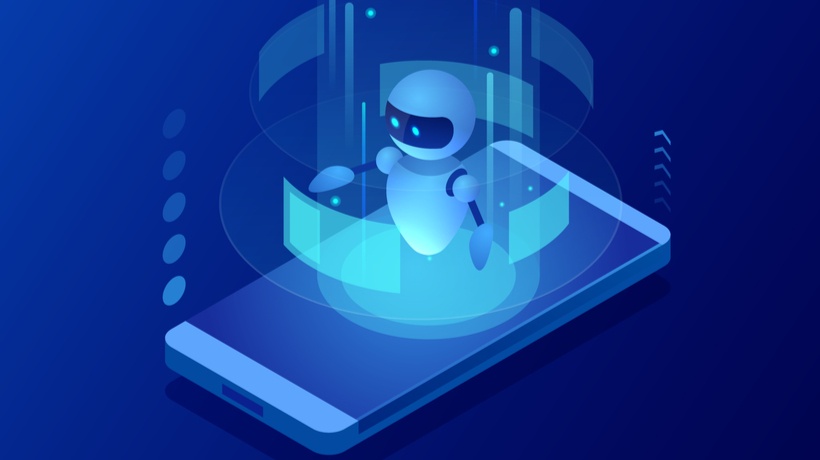Potential Applications Of AI In Education And eLearning
Right now, we are actively using AI in eLearning, but mostly for developing educational content: creating/refining scripts, generating images, checking texts for errors, designing exercises, etc. However, the main potential of AI in learning lies in its integration into educational materials. In this article, we'll talk about application examples of AI integration. What's very important is that nearly all the examples from this list can be implemented by an in-house eLearning team. Advanced programming skills and massive budgets are not required.
6 Applications Of AI In Learning
1. Checking Open-Ended Answers
One of the basic applications of AI in learning is checking responses to open-ended questions, analyzing texts, and evaluating case studies. Let's take a SMART course as an example (which, let's be honest, everyone has probably developed a couple of dozen times). Currently, we assess knowledge through quizzes. Here are four formulated tasks—which one aligns with SMART? Or: here's a given task description—what's wrong with it? You might have matching or drag-and-drop tasks, but ultimately, it's still just a quiz with different mechanics.
Example 1
Here's an example of a typical SMART exercise:
The user is asked a question, for example: "Check the goal setting for compliance with the SMART criteria and determine which criterion is missing: Increase the level of customer satisfaction with the support service in 2025." Then, several answer options are provided:
A. Specificity
B. Measurability
C. Achievability
D. Time-bound
By using AI, we can transform a quiz into an exercise that not only tests knowledge but also helps learners understand the material and develop skills.
Example 2
Here's an example of a SMART goal-setting exercise with AI:
User receives the task: "You are a manager and are attending a conference on July 5th to give a speech. You need to assign a task to the designer, Alex, to create a presentation on the topic 'Smart Learning.' You already have the script." Next, the user enters their response in free form, explaining how they would assign the task, for example:
"Alex, make a presentation on the topic 'Smart Learning.'" Then, the AI provides feedback on this response, highlighting all the pros and cons. The manager enters into a text field how they would set the task. Then, the AI points out the mistakes. At the same time, we can customize how the AI responds. Want the AI to simply provide the correct answer and highlight errors? No problem. Want the AI to ask guiding questions so the employee reformulates the task correctly? Easy. Want the employee to get a new practice scenario each time? The AI can generate a fresh case on the fly.
A similar exercise can be done for reviewing case studies—even those without clear "right" answers, where we're more interested in the employee's thought process and reasoning.
By the way, the time-to-market for this specific exercise? 10 minutes. That includes 3 minutes to upload the bot and another 3 minutes spent picking an avatar.
2. Course Q&A Support
I often use AI for this myself. If I read something and don't fully understand it, I go "interrogate" the AI to get a clearer explanation. For general topics (like SMART goals), ChatGPT works great—it handles those perfectly. But for internal company content (policies, regulations) or niche subjects (AML/CFT, specialized software), ChatGPT falls short. It simply doesn't know the answers to our specific questions.
So why bother integrating AI into a course when you can just ask ChatGPT?
- ChatGPT doesn't know internal policies
But, an AI linked to the course does—because we preload it with the course material, and it bases its answers on that. - Seamless integration
Having this feature built directly into the course is incredibly convenient.
How Employees Currently Search For Clarifications With AI
If an employee doesn't understand something in a corporate course, here's what they have to do:
- Grab their smartphone (since work computers usually block ChatGPT and other AI tools).
- Open the AI platform.
- Type out their question (which can sometimes be lengthy) on a small screen.
- Read the response on that same tiny display.
- If needed, ask follow-up questions.
And that's assuming they're already comfortable using AI. If they're not regular users? They won't bother. Even if they are, the process is too cumbersome. The more steps we require, the fewer people complete the action. But we want employees to independently clarify misunderstandings—so simplifying this path dramatically increases engagement.
Plus, the AI can do more than just answer:
- Guide learners to relevant course sections.
- Store and analyze data.
By embedding AI directly into the course, we collect and analyze user questions. This shows exactly what's unclear, allowing us to refine future iterations.
3. Conversation Simulators
Three years ago, I built an MVP for a mobile service sales simulator. You talk out loud with an AI playing the customer's role. The dialogue is nonlinear—you steer the conversation, and at the end, you get feedback. The results were fascinating: the simulator genuinely improves sales skills because the AI behaves like a real customer.
4. Specialized Narrow Tasks
AI isn't limited to checking text or voice (like in the dialogue simulator example)—it can analyze anything:
- Accuracy of Excel reports.
- Code quality.
- Public speaking recordings.
- Facial expressions and tone of voice.
Technically, this is more complex than the earlier examples (though Excel reports are relatively straightforward), but it's entirely feasible. The tools for this already exist.
5. AI-Powered Knowledge Base Search
Every large company has a massive knowledge base filled with essential information: files, forms, documentation. The only downside? Try finding anything in there. Even when you locate the right document, you often have to skim pages to get your answer.
AI can solve this: It finds the correct files and extracts the precise answer to a query. This is technically challenging—implementing it would likely require IT support and a significant budget.
6. AI Mentors
These are bots that know everything an employee might need for their job. They assist with tasks and learning—proactively nudging employees rather than waiting passively for questions.
Sounds amazing, but right now, it feels like utopia. Why?
- The system would be overly complex, with most processes beyond our control.
- Development and updates would require massive resources (daily tweaks, since the system "knows everything").
- The risk of malfunctions is too high.
Conclusion
AI unlocks entirely new possibilities for eLearning—applications far beyond content generation. The key? Don't wait for the "perfect" moment. Start experimenting now. As the SMART exercise example showed, some solutions take just 10 minutes to implement. The sooner you begin, the faster you'll see results. The technology is already here. All that's left is to start using it.
Editor's Note: The views expressed in this article reflect the author's personal opinion and are not meant to be representative of eLI's viewpoints. Check out our list of Top LMS Platforms With The Best AI Tools For Training And Education, if you're interested in learning more about AI integration.









